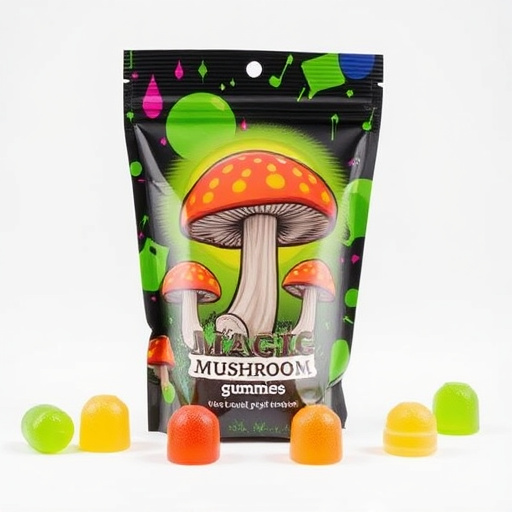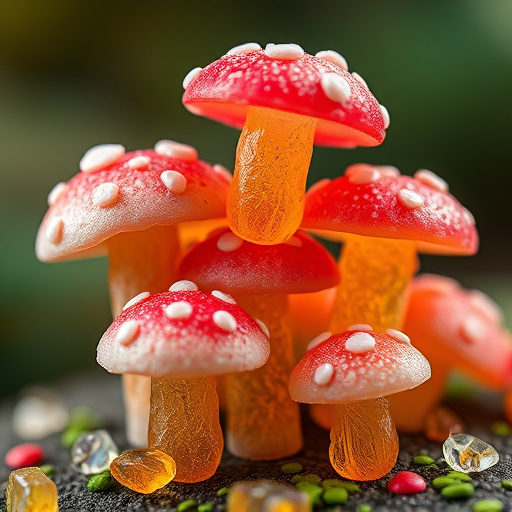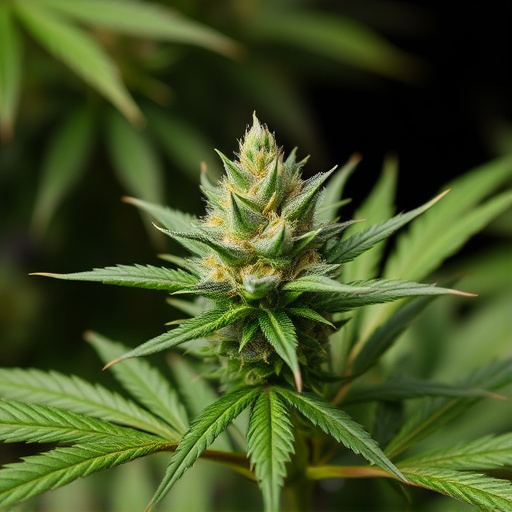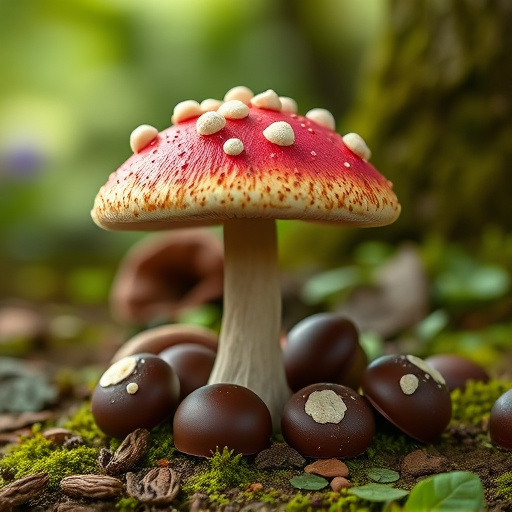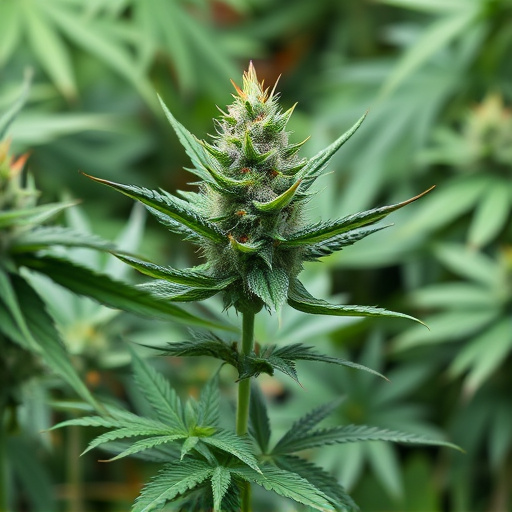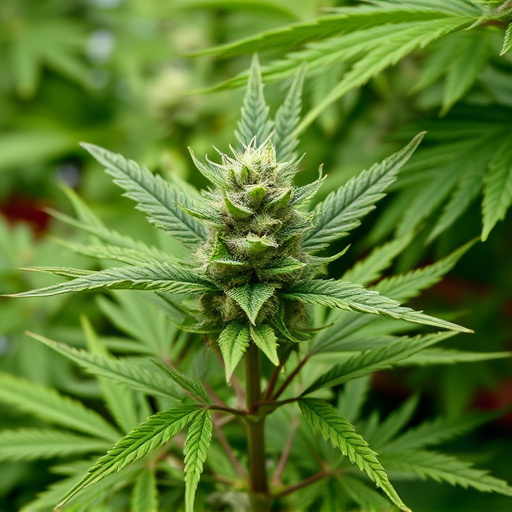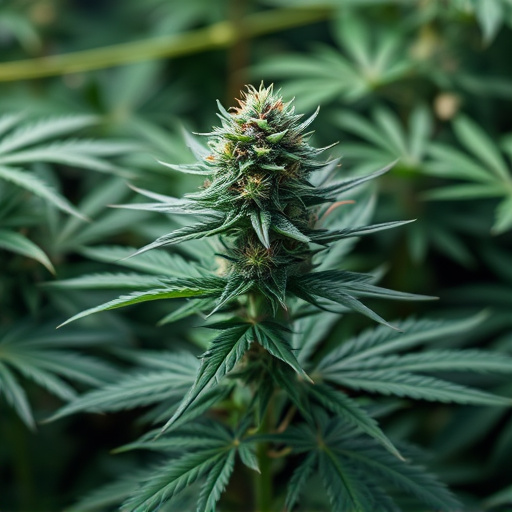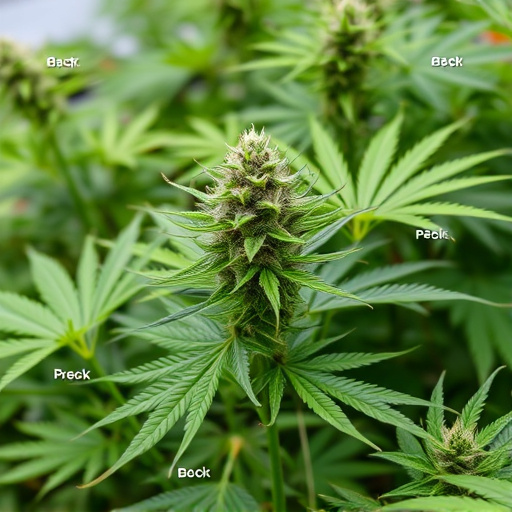The distinct aromas of cannabis strains result from interactions between volatile organic compounds (VOCs), primarily terpenes and cannabinoids, influenced by both genetic diversity and environmental factors. Genetic breeding allows cultivators to produce strains with tailored terpene profiles for specific therapeutic benefits and user preferences. Environmental conditions like temperature, light, and humidity further customize these aromas, creating a vast array of scents from citrusy to earthy notes, enhancing the sensory experience of medical cannabis strains.
Unravel the enchanting world of cannabis aroma with us. This article explores what makes each strain unique, from its genetic makeup and terpene profiles to environmental influences that shape its development. We delve into how these factors contribute to the diverse sensory experiences associated with medical cannabis strains. Get ready to discover the intricate dance of molecules that creates the complex scents that captivate users worldwide.
- Genetic Makeup and Terpene Profiles: The Foundation of Cannabis Aroma
- Environmental Factors: How Terpenes Develop and Evolve
- Sensory Perception: Unlocking the Complexities of Cannabis Scents
Genetic Makeup and Terpene Profiles: The Foundation of Cannabis Aroma
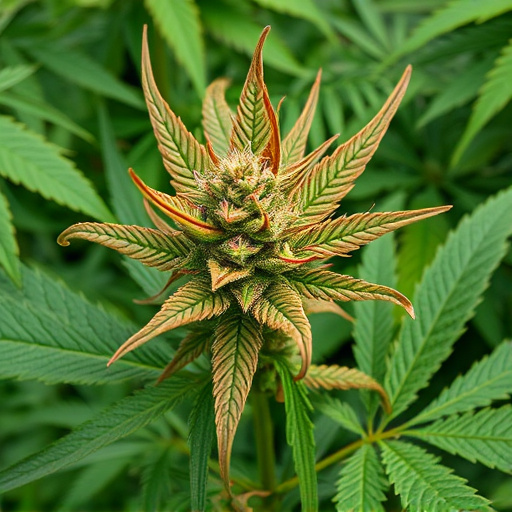
The genetic makeup of cannabis plants plays a fundamental role in shaping their aroma, with each strain possessing a unique combination of chemical compounds that contribute to its distinct scent. These plants produce an array of volatile organic compounds (VOCs), primarily terpenes and cannabinoids, which interact together to create complex aromas. Terpenes, often referred to as the “aromatic oils” of cannabis, are responsible for many of the familiar scents associated with different strains. From citrusy and fruity notes to earthy and herbal nuances, terpene profiles significantly influence how a particular medical cannabis strain smells and tastes.
Varieties of medical cannabis are bred with specific terpene compositions in mind, allowing cultivators to craft strains with therapeutic benefits tailored to various conditions. For instance, some strains may be rich in myrcene, known for its relaxing and sedative properties, while others might boast high levels of limonene, often linked to uplifting and mood-enhancing effects. The genetic diversity within cannabis allows for a vast array of terpene combinations, ensuring that there’s a strain with an aroma to suit nearly every preference and intended use, be it relaxation, pain management, or mental clarity.
Environmental Factors: How Terpenes Develop and Evolve
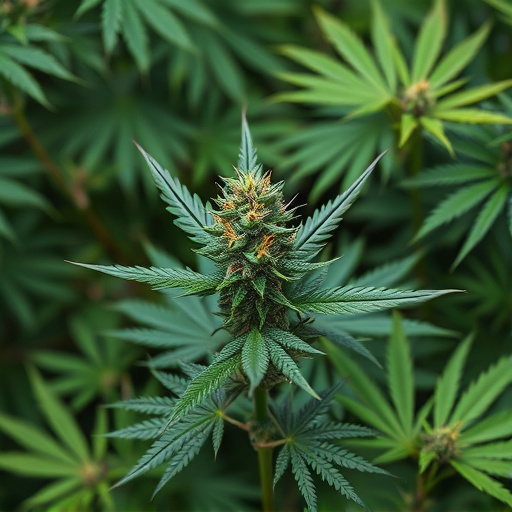
The development and evolution of terpenes in strains of medical cannabis are closely tied to environmental factors. These compounds, responsible for the unique aromas and flavors we associate with different strains, are influenced by temperature, light, and humidity levels during the plant’s growth cycle. For instance, cooler temperatures tend to promote the production of certain terpene profiles, leading to more pronounced citrus or floral notes. Conversely, warmer conditions may encourage the development of earthy or piney terpenes.
Light exposure plays a complementary role, as it affects the plant’s overall metabolism and the synthesis of specific terpenes. Different light spectrums can trigger variations in terpene production, contributing to the diversity of aromas found across various strains of medical cannabis. Understanding these environmental factors is key to cultivating cannabis with desirable terpene profiles, thereby enhancing the therapeutic potential and sensory experience for users.
Sensory Perception: Unlocking the Complexities of Cannabis Scents
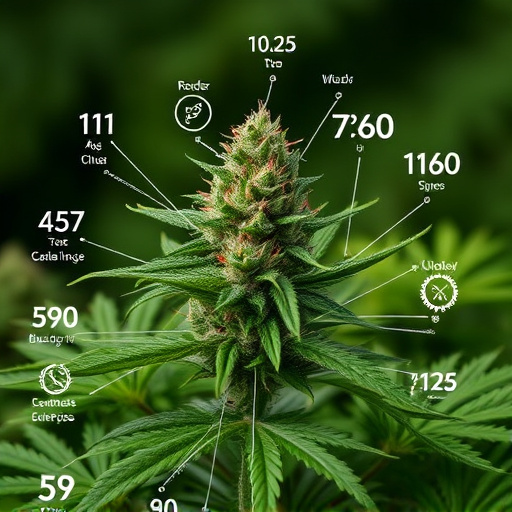
The sensory perception of cannabis aroma is a captivating and complex experience, offering insights into the diverse characteristics of different strains of medical cannabis. Beyond the initial whiff, a multitude of factors contribute to the intricate scents that have made this plant so intriguing for centuries. Each strain possesses a unique olfactory profile, ranging from earthy and woody notes to fruity and floral nuances. This complexity arises from the interplay of various chemical compounds within the cannabis plant, primarily terpenes and cannabinoids.
Terpenes, responsible for the essential oils in many plants, play a pivotal role in shaping the aroma and flavor of cannabis. Different terpenes evoke distinct sensory experiences, with some evoking citrusy or pine-like scents while others impart fruity or sweet overtones. Cannabinoids, such as THC and CBD, also contribute to the scent profile, influencing both the intensity and type of aromas perceived. The combination of these compounds creates a symphony of smells that can vary widely between strains, making the exploration of different medical cannabis options an intriguing voyage for the senses.
The distinct aroma of cannabis is a result of a complex interplay between genetic makeup, environmental conditions, and sensory perception. Understanding these factors is crucial in appreciating the diverse range of scents found across various strains of medical cannabis. By exploring these elements, we can unravel the intricate tapestry of terpenes that contribute to the unique experiences associated with different varieties, enhancing our ability to navigate and enjoy the vast landscape of cannabis aromatics.
